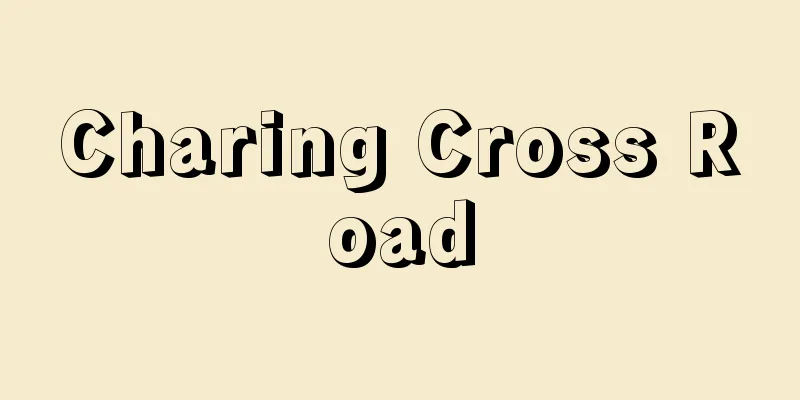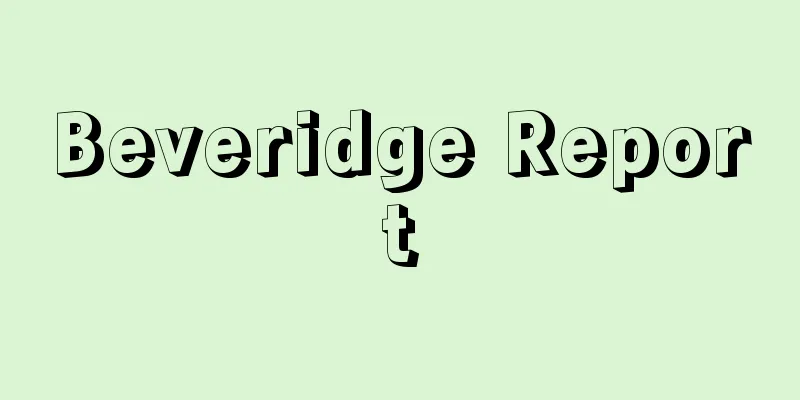French Theatre

|
Its origins lie in the rites (liturgies) of medieval Christian churches, as in other European countries, but when one looks at French theater from the Middle Ages to the present, a notable characteristic is the "verbal theater" and "poetic theater" that were established in the 17th century, the heyday of theater, and the tendency to emphasize literary drama. Since Aristotle, theatrical art has tended to be considered a special form of literature, and until recent years, especially in France, there was a strong tendency to neglect stagecraft such as direction and staging. However, with the rise of international exchange at the end of the 20th century, there was a growing movement to fuse the écriture (style, expression) of the script with that of the stage. [Hiroshi Ito, July 20, 2018] Middle Ages: Religious and Secular DramaReligious drama began in the 9th century when monks took turns reciting important parts of the Bible in Latin during Easter and other liturgical ceremonies. These church liturgical dramas were eventually performed outdoors, with French dialogue and actors becoming ordinary believers, evolving into the semi-liturgical drama "Plays of Adam" (author unknown) at the end of the 12th century. The "Plays of Saint Nicholas" (c. 1200) by the troubadour Jean Bodel (c. 1165-c. 1210) included descriptions of manners and customs, and grew into a fine drama. Mystères, or mystères, developed as large spectacles from the end of the 14th century to the mid-16th century, included plays of the Passion of Christ and miracle plays of the Virgin Mary, based on faith in the Virgin Mary. Passion play troupes were formed in various places, and the first permanent theater was built in Paris in 1402. As a rule, the performances were without actresses and used parallel stages with the necessary stage equipment such as hell and heaven lined up side by side. Passion plays were generally long, and the representative work, Passion Plays (c. 1450) by Arnoul Gréban (c. 1420-c. 1470), took four days to perform. Passion plays eventually lost their religious character and became too secular, and in 1548 they were banned by the Paris High Court. Meanwhile, between the performances of mythological plays, secular plays such as farce (farce), sotie (fool's play), and morality plays (moralité) were performed on the same stage. Secular plays were born from comic sermons that were parodies of regular sermons, street performances by traveling performers, and folk festivals. In the 13th century, Adam de la Halle's pastoral play Robin and Marion (c. 1283) appeared. Of particular note was the farce that would have an influence on later generations, and in the 15th century, his masterpiece Monsieur Patrin (author unknown, c. 1464-1469) was produced. The performers of secular plays were students and townspeople who formed theater companies such as the Nonkiren. [Hiroshi Ito, July 20, 2018] Renaissance: Study and Imitation of Ancient DramaThe wave of the Renaissance, which began in Italy, reached France in the 16th century, where the study and translation of ancient Greek and Roman drama became popular, and humanists attempted to imitate and transplant them. Etienne Jodelle's The Captive Cleopatra (1552) was the first humanist tragedy in French, which sought a theme from ancient times, and clearly shows the characteristics of Renaissance tragedy, such as "a five-act structure with a chorus, an exclamatory tone, and little change in the plot." Jean de La Taille (c. 1540-c. 1607) also wrote tragedies based on the Bible, such as La Angélie (1572). Around this time, an Italian scholar published a commentary on Aristotle's Poetics, which was the first in the history of French theater to clearly distinguish between tragedy (tragédie) and comedy (comédie) and to clarify the rule of three unities (the rule of three unities). In the latter half of the 16th century, there were religious wars, and a violent baroque tendency emerged, reflecting the savage state of the society. Its shadow can be seen in Robert Garnier's masterpiece tragedy Les Jewesses (1583) and Antoine de Montchrestien's (c. 1575-1621) lyric tragedy Les Queenes de Scots (1601). Comedy also imitated the ancient world, with Jodelle's Eugène (1553), but the only other notable work was Pierre de Lalibé's adaptation of an Italian comedy. What is important is the arrival of the Italian commedia dell'arte, an improvisational masked comedy troupe, in France after the mid-16th century, and their popularity led to a reevaluation of French farce, and the two fused together to influence Molière and others. Professional theater troupes and actresses also appeared around the middle of this century. [Hiroshi Ito, July 22, 2018] The 17th century: From Baroque to Classical theatreThe plays from the end of the 16th century to the first half of the 17th century were Baroque plays with complex plots and complicated events, and this theatricality became the soil for later classical plays. The Baroque tragicomédie, absurd adventure stories, had been popular since Garnier's first tragicomedy in France, Bradamant (1582), and the Italian-influenced pastorale, a love story between shepherds, was also loved by the courtiers, along with the court ballet. The prolific playwright Alexandre Hardy, who was the resident playwright at the only Paris theatre, the Théâtre de Bourgogne (founded in 1548), wrote a variety of plays full of dramatic conflicts. From around 1630, the daughters of upper-class families also began to attend the theatre, and there was a demand for elegant and rational theatre. In 1634, the second permanent theater, the Théâtre Marais, was officially established in Paris by remodeling an indoor palm court (a type of tennis court) that had been in use since 1629. In the same year, Jean Rotroux presented La Die Hercule at the Théâtre de Bourgogne, and Jean Meillet presented La Sophonisbes at the Théâtre Marais, both of which were legal tragedies. From then on, these two theaters competed with each other, each with its own composer. In 1637, Pierre Corneille's tragicomedy "Le Cid" premiered at the Théâtre de Marais and was a groundbreaking success. However, a controversy arose as it was against the rules of classical theater that were beginning to be established at that time (the rule of the three singularities, the distinction between genres, verisimilitude, propriety, etc.), and the Académie Française, founded by Prime Minister Richelieu, ruled in its ruling. This marked the beginning of the shift from Baroque theater to classical theater. After that, Corneille wrote masterpieces of heroic will tragedy that followed the rules, such as "Horace" (1640), in powerful verse. In contrast, Jean Racine accepted the rules from the beginning and wrote works such as "Andromaque" (1667), a tragedy of fatalistic passion, in elegant verse. He perfected classical tragedy, characterized by order and balance, and also established the "verbal theater" in which words describe everything. In 1658, a third theater (the Palais Royal) was built in Paris, and Molière's troupe began to use it. Molière wrote Tartuffe (1664-1669) and other plays, perfecting the previously vulgar comedy into a literary comedy of character, and elevating comedy, which had previously been considered a step below tragedy, to the same level as tragedy. Both tragedies and comedies were written in five acts and in twelve-syllable verse (alexandrin), which was also excellent in terms of literature, and this marked the peak of literary drama. In the second half of the century, Philippe Quinault and Thomas Corneille wrote elegant love plays, but Quinault in particular moved into the opera world as a librettist when the Royal Academy of Music (Opera) was founded in 1672 and composer Jean-Baptiste Lully obtained exclusive rights to the institution. In this way, "musical theater" (opera) was institutionally separated from "verbal theater". The national theatre, the Comédie-Française, founded in 1680 after Molière's death, became primarily a temple to the latter. [Hiroshi Ito] The 18th century: comedy and civic theatreInfluenced by Molière, Jean-François Regnard and Alain René Lesage wrote comedies from the end of the 17th century, and Prosper Joliot de Crébillon the Elder wrote cruel tragedies, but generally tragedy fell into disuse and comedy flourished. Voltaire, an Enlightenment thinker who was fascinated by Shakespeare, wrote works such as Zaire (1732) based on Othello, in an attempt to revive classical tragedy, but was unsuccessful. Pierre Carlé de Chamblain de Marivaux wrote works such as A Jou de l'amour et de Chance (1730) for an Italian theater company that had been living in Paris since 1716, and created comedies different from those of Molière, analyzing delicate feelings of love. Denis Diderot, an Encyclopedist philosopher, aimed to break away from classical theatre and advocated the bourgeois drama (dram bourgeois) as a more modern prose drama between tragedy and comedy, and wrote about it in his works and in other books such as On the Art of Dramatic Plays (1758). Michel Jean Sudaene was a practitioner of bourgeois drama, but Pierre Augustin Calon de Beaumarchais's Le nozze di Figaro (1784), which was performed just before the Revolution, is a brilliant synthesis of comedy and bourgeois drama. This century was a time when people struggled to break away from the shackles of the great classical theatre of the 17th century and demonstrate their own originality, but the classical theatre form continued unbroken until the beginning of the 19th century. Theatrical enthusiasm was thriving, and operas and fair plays became popular, giving birth to a variety of theatres. Theaters proliferated in the entertainment districts of the boulevards, and vaudeville, opera comique, and musical theatre (mellodrame) were performed, attracting large audiences. [Hiroshi Ito, July 20, 2018] The 19th century: From romantic drama to realistic dramaAfter the Revolution of 1789, the adventure-like melodramas of René Charles Gilbert de Pixérécourt became very popular, and this popular theater became the basis for the Romantic revolution in classical drama. The year after the death of the classical tragic actor François-Joseph Talma, Victor-Marie Hugo proclaimed the Romantic theater, which broke the constraints of classical drama, in his preface to Cromwell (1827). His production of Hernani (1830) at the Comédie-Française was controversial but a great success, ushering in the era of Romantic drama. Alexandre Dumas père's Antony (1831), Alfred de Bigny's Chatterton (1835), and Hugo's Rue Bras (1838) were performed by the great actor Frédérick Lemaître (1800-1876), who was called the "holy monster," and received enthusiastic reception. However, these did not last long, and Alfred de Musset's historical drama Lorenzaccio (1834), which was a late Romantic work, was not performed until the end of the century. Audiences were fascinated by the classical tragedy performed by the great actress Rachelle, but in reaction to the "madness" of the Romanticism, the writer François Ponsard (1814-1867) appeared, who was a "good sense" writer. On the other hand, the "well-made plays" of popular writers Eugène Scribe and Victorien Sardou were a big hit, and operettas composed by Jacques Offenbach were also popular. Alexandre Dumas fils (the younger) produced genre plays such as La Traviata (1852), and Eugène Labiche wrote vaudeville plays. From these contemporary genre plays, realistic plays dealing with social issues such as Henri Becque's A Flock of Crows (1882) were born, and Emile Zola's theory of naturalism was born. Under their influence, André Antoine founded the Théâtre Libre (1887-1896). With the aim of presenting "fragments of real life" on stage, the theater was the first to introduce works by Scandinavian artists such as Ibsen, and staged a succession of plays, including Georges de Port-Riche's psychological love dramas, François de Curel's (1854-1928) ideological dramas, Georges Courteline's petit comedies, and Jules Renard's Les Carrots (1900). The theatrical innovation movement of the Théâtre Libre, which adopted naturalism and placed emphasis on staging, had a major impact on modern theater movements in various countries until the beginning of the 20th century. On the other hand, there was a reaction to this trend, such as the introduction of verse dramas by the symbolist poet Maurice Maeterlinck and Paul Claudel by the poet Paul Fort's Théâtre des Beaux-Arts (1890-1893) and the actor Lune Peau's Théâtre des Producers (1893-1929), as well as the performance of Alfred Jarry's Les Kings (1896), a precursor of avant-garde theater. The groundbreaking success of Edmond Rostand's romantic rhyme drama Cyrano de Bergerac (1897), at the end of the century, was due in large part to the virtuoso performance of the actor Constant Coquelin, and, together with the presence of other great actors of the time such as actresses Sarah Bernhardt and Mounet-Sully (1841-1916), established the star system (actor-centered approach). [Hiroshi Ito, July 20, 2018] 20th centuryThe era of the directorIn the early 20th century, boulevard theatres such as those by Georges Feydeau and Sacha Guitry were popular, but in 1913, director Jacques Copeau founded the Vieux Colombier as a venue for staging literary plays to save theater from commercialization. Works staged included classics such as Molière, as well as works by Claudel and Prosper Mérimée, with Charles Buildrac's The Merchant Ship Tenacity (1920) a particular success. Copeau's pupils Charles Durand and Louis Jouvet eventually left their master and each took on anti-realist direction, the former directing Marcel Achard and Armand Salacroux, the latter Jules Roman and Jean Cocteau, and especially Jean Giraudoux's Siegfried (1928), marking a milestone in the close cooperation between directors and writers in later years. Durand and Jouvet, along with the White Russian Georges Pitoeff, who introduced the young Jean Anouilh to the world, and Gaston Baty, who introduced the psychological plays of Henri-René Lenormand, formed the four directors and their theater company "Cartel des quatre" and led the French theater world until World War II. Their commonality was anti-naturalism and anti-commercialism. In the field of surrealist theater, there were Roger Bitrac and Guillaume Apollinaire, but Antonin Artaud is particularly noteworthy. His theory on "theatre of cruelty" (1938) led to the anti-theater of the 1950s. [Hiroshi Ito, July 20, 2018] Emergence of absurdist theatreJean-Paul Sartre, Albert Camus and Anouilh dramatized the era of resistance in The Fly (1943), The Misunderstanding (1944) and Antigone (1944) respectively during the German occupation in World War II, and after the war they produced existentialist and rebellious theatre. In the early 1950s, going against traditional dramaturgy, ignoring plots and the personalities and psychology of characters, and deconstructing lines and language, the new theatre, also known as "anti-theatre" or "theatre de l'absurd", was born. Works by Eugène Ionesco's The Bald Singer (1950) and Samuel Beckett's Waiting for Godot (1953), as well as Jacques Audibert, Arthur Adamoff, and Jean Genet, depicted absurd worlds in their own unique terms. On the other hand, the unique worlds of Michel de Guerderode and Boris Bien also attracted attention, and playwrights with a special interest in poetic language such as Jean Vauthier (1910-1992), Marguerite Duras, and François Biédoux appeared. What they all had in common was an attempt to explore theatricality by destroying the drama structure. A young playwright who did not belong to this movement but was a leading figure in the theatre of the 1960s was the Spanish Fernando Arrabal, whose works were performed as neo-baroque by three directors from Argentina: Jorge Labery, Jérôme Savary (1942-2013), and Victor Garcia, and received a great response. In addition, Jean-Louis Barrault and Jean Villard, disciples of Durand, are indispensable as theatre people of the postwar period. Barrault premiered Claudel's masterpiece "Les Satin Shoes", written in 1925 but never performed, in 1943, and even after the Second World War, he staged Claudel's major verse dramas with cosmic spaces, realizing the "théâtre total". The Renaud-Barrault Theatre Company, which he formed with his wife, actress Madeleine Renaud, also performed Ionesco's The Rhinoceros (1960), Beckett's Days of the Beautiful Me (1963), and Genet's Screen (1966), and was at the center of French theater in the 1950s and 1960s. Meanwhile, Villard presided over the TNP (National Popular Theatre) and the Avignon Theater Festival, and contributed to making theater accessible to the masses by staging classics with actors Gérard Philipe and Maria Casarès (1922-1997). The next directors to follow were Roger Planchon and Antoine Bitèze, practitioners of Brechtian theater, the former of whom broke new ground with a new interpretation of the classics, such as Molière's Tartuffe in 1962. On the other hand, the boulevard theater of André Roussin and Marc Camoletti (1923-2003) has always captivated the masses. [Hiroshi Ito, July 20, 2018] After 1968: Theatre of the BodyInspired by the Polish director Jerzy Grotowski, who came to France around the time of the May 1968 revolution, and the American Living Theatre, a movement was born in France that emphasized the body in order to bring out the fundamental energy of theater. This was a fundamental questioning of theater, and a confrontation with "theatre of words." In the 1970s, the Théâtre du Soleil, led by female director Ariane Mnouchkine (1939-), who followed this trend, successfully produced a collective production of 1789 (1970). Another sign of this is the re-evaluation of opera, ballet, and even Japanese dance. In the 1980s, French theater was increasingly led by directors such as Patrice Chéreau (1944-2013), Jean-Pierre Vincent (1942-2020), and Jacques Lassalle (1936-2018), who reinterpreted the classics while exploring and exploring the relationship and harmony between the body and words. As for playwrights, Michel Vinaver (1927- ), who was active in the 1970s, released works such as "Job Seeker" (1973) from the perspective of a businessman, and Jean-Claude Grandbert was successful in light-heartedly dealing with the Jewish issue in works such as "Atelier" (1979). In the 1980s, Bernard-Marie Koltés (1948-1989), who died young from AIDS, expressed wild lyricism in works such as "Les Negroes and Dogs" (1983) and "In Solitude in the Cotton Fields" (1987), and became a hot topic in his stage adaptations of Chéreau's works. After the Second World War, the government and Ministry of Culture established national theatre centers in regional cities, and the decentralization policy (décentralization) proved successful, and theatre soon became more active outside of Paris. Meanwhile, international exchange also became more active. In the 1970s, Peter Brook of the UK established the International Centre for Theatre Research (CIRT (Schild), renamed the International Centre for Theatre Creation (CICT (Schild) in 1974)) in Paris, and began activities by gathering theatre people from all over the world. In 1983, the Odeon-European Theatre was created at the Odeon Theatre in Paris, with Giorgio Strehler of Italy as its first general director, followed by Lluis Pasqual (1951-) of Spain and Georges Lavaudant (1947-) of France, who achieved notable results. Other famous directors who created plays in France include Bob (real name Robert) Wilson (1941-), Peter Stein (1937-), and Klaus Michael Grüber (1941-2008) from the United States. In the 1990s, international exchange became more and more active, and issues such as the never-ending war and the AIDS epidemic, a common disaster for all humanity, began to be addressed on an international scale. In this way, the aesthetics of each country blended together, and competition to create new plays made the French stage today very lively and diverse. This has also led to the emergence of a diverse range of young playwrights, including Yasmina Reza (1959-), Olivier Py (1965-), and Xavier Durringer (1963-). [Hiroshi Ito] French Theatre in JapanKishida Kunio, who traveled to France in 1919 (Taisho 8) to study under Copeau, wrote his own plays and translated and introduced modern French plays together with Iwata Toyoo (Shishi Bunroku) and others in an attempt to introduce French "verbal theatre" to Japan, founding the Bungakuza Theatre Company in 1937 (Showa 12). After World War II, the Bungakuza Theatre Company, led by Kato Michio and Akutagawa Hiroshi, introduced works by Sartre and Camus, while Asari Keita (1933-2018) and others led the Shiki Theatre Company (founded in 1953) to perform plays by Anouilh and Giraudoux. In the 1960s, avant-garde French plays from the 1950s, such as those by Beckett, were introduced, and for a time in the early 1970s, Arrabal was also highly praised. Other theater companies such as Théâtre Echo (founded in 1950) and NLT (founded in 1964) also performed boulevard plays. Playwrights include Yukio Mishima, who was an ardent admirer of Racine, Seiichi Yashiro, who was influenced by Molière and Anouilh, Minoru Betsuyaku and Makoto Sato (1943-), who were inspired by the avant-garde plays of Beckett and others, and Shoji Kokami (1958-), a young playwright. In the 1980s, several works by the black humorist Guy Foissy were performed, and Racine was performed in succession with new translations and direction by Moriaki Watanabe (1933-2021), demonstrating the city's diverse side. Watanabe's Japanese translation of Racine's Phèdre was performed in Paris in 1986 and attracted attention. From this time onwards, overseas performances of not only Noh and Kabuki but also contemporary theatre became more popular, with the theatre company Sajiki led by Terayama Shuji and the theatre company SCOT led by Suzuki Tadashi (1939-) performing in Paris, and butoh troupes also received high praise in France. Since the 1990s, Japanese-French co-productions have also become more prominent, and it is particularly noteworthy that Tokyo Notes (1994) by the young playwright Hirata Oriza (1962-) was translated into French and performed in various parts of France in 2000 with the author directing it. It is noteworthy that international exchange has become remarkable not only in terms of the import of works but also in terms of the export of works. [Hiroshi Ito] "History of Modern French Drama" by Keisuke Honjo (1969, Shinchosha) ▽ "French Classical Drama" by A. Adam, translated by Konno Kazuo (1971, Hakusuisha) ▽ "History of Western Drama" by Taro Sugawara (1973, Engeki Shuppansha) ▽ "French Literature Lectures 4: Drama" by Moriaki Watanabe et al. (1977, Taishukan Shoten) ▽ "French Avant-Garde Drama" by M. Corvin, translated by Toshimitsu Tetsuo (1982, Hakusuisha) ▽ "Spiritual History of 20th Century Drama" by Takayuki Saeki ( 1982, Shobunsha) ▽ "French Drama and Its Surroundings" by Junpei Kawashima (1986, Surugadai Shuppansha) ▽ "From the Playhouses of Paris" by Ken Kazama (1987, Chikuma Shobo) ▽ "Studies on French Baroque Drama" by Yasuo Fujii (1995, Heibonsha) "Comédie-Française" by P. Devaux, translated by Ito Hiroshi (1995, Hakusuisha)" ▽ "Paris Between the Acts" by Kazama Ken (1995, NTT Publishing)" ▽ "Fighting Figaro: A Life of Beaumarchais" by Suzuki Koji (1997, Taishukan Shoten)" ▽ "The Birth of the French Tragic Actress: Flower of the Parisian Court" by Tobari Noriko (1998, Jinbun Shoin) ▽ "An Outline of the History of French Theatre" by Iwase Takashi, Sato Mie, and Ito Hiroshi, revised and expanded edition (1999, Waseda University Press)" ▽ "Classical French Comedy" by R. Guichemere, translated by Ito Hiroshi (1999, Hakusuisha)" ▽ "Perspective and Set Play: Scenography in 17th Century France" by Hashimoto Nori (2000, Chuo University Press)" ▽ "Selections of Contemporary French Theatre Masterpieces" by Guy Foissy, Françoise Derain, Simone de Beauvoir, Françoise Sagan, and others, translated by Kotaro Shibata (2001, Engeki Shuppansha) [References] | | | | | | | |Arabard|Hardy| | | | | | | | | | | | | |Claudel| |Shiki | | | | | | | | | | | | | | | | | | | | | | | | | | | | | | | | | |Diderot| | | | | | | | | | | | | | | | | | | | | | | | | | | | | | | | | | | | | | |Porte-Riche| | | | | | | | | | | | | | |Richelieu| | | | | | |Renaud| | | |Source: Shogakukan Encyclopedia Nipponica About Encyclopedia Nipponica Information | Legend |
|
その起源は他のヨーロッパ諸国と同じく、中世キリスト教の教会の儀式(典礼)であるが、中世から現代までのフランス演劇を概観して際だつ特徴は、演劇全盛の17世紀に確立された「ことばの演劇」「詩的演劇」であり、文学戯曲重視の傾向である。アリストテレス以来、演劇芸術は文学の特殊な形式と考えられがちであったうえに、とくにフランスでは近年まで、演出や上演など舞台術は軽視される傾向が強かった。しかし20世紀末には国際交流が盛んになり、台本のエクリチュール(文体、表現)と舞台のそれを融合する動きが活発になった。 [伊藤 洋 2018年7月20日] 中世―宗教劇と世俗劇宗教劇は9世紀ごろ復活祭などの典礼に、僧侶(そうりょ)がラテン語で聖書の重要部分を交互に唱(うた)う対話体の交誦(トロープス)を取り入れたことから始まる。この教会内の典礼劇がやがて戸外で演じられ、台詞(せりふ)もフランス語へ、演者も一般信者へとかわって、12世紀末の準典礼劇『アダンの劇』(作者不詳)などに進化した。吟遊詩人ジャン・ボデルJean Bodel(1165ころ―1210ころ)作『聖ニコラ劇』(1200ころ)は風俗描写も含み、りっぱな演劇に成長している。14世紀末から16世紀中葉まで大スペクタクルとして発展した聖史劇(ミステール)mystèreには、キリスト受難劇や聖母信仰に基づく聖母奇跡劇があった。これらの受難劇上演組合が各地にでき、1402年にはパリに最初の常設劇場も生まれた。上演は原則として女優なしで、地獄や天国など必要な舞台装置を横に並べた並列舞台を使った。受難劇(パシオン)Passionは一般に長大で、その代表作アルヌール・グレバンArnoul Gréban(1420ころ―1470ころ)の『受難聖史劇』(1450ころ)は上演に4日を要した。聖史劇はやがてその宗教性を失い、世俗的になりすぎ、1548年パリ高等法院から上演を禁止された。 一方、聖史劇上演の合間には同じ舞台でファルスfarce(笑劇)、ソチsotie(阿呆(あほう)劇)、道徳劇(モラリテ)moralité(教訓劇)などの世俗劇が演じられていた。世俗劇は正規の説教のパロディーである滑稽(こっけい)説教、旅芸人の大道芸、土俗祭礼などから生まれた。13世紀にはアダン・ド・ラ・アールの牧歌劇『ロバンとマリオン』(1283ころ)などが現れる。注目すべきはのちに影響を与えるファルスで、15世紀にその傑作『パトラン先生』(作者不詳、1464~1469ころ)が生まれた。世俗劇の演者は学生や町人で「呑気連(のんきれん)」などの劇団をつくっていた。 [伊藤 洋 2018年7月20日] ルネサンス―古代劇の研究と模倣イタリアに始まったルネサンスの波は、16世紀にはフランスにも及び、ギリシア・ローマの古代劇の研究・翻訳が盛んになり、人文主義者(ユマニスト)によるその模倣と移植の試みが行われた。エティエンヌ・ジョデルの『囚(とら)われのクレオパトラ』(1552)は主題を古代に求めた、フランス語による最初の人文主義悲劇であり、「五幕構成で合唱隊が登場し、詠嘆調で筋(すじ)の変化はあまりない」というルネサンス悲劇の特徴が明確に現れている。ジャン・ド・ラ・タイユJean de La Taille(1540ころ―1607ころ)の『怒れるサユル』(1572)など聖書に取材した悲劇も書かれた。このころイタリアの学者によるアリストテレスの『詩学』解説が出版され、フランス演劇史上で初めて悲劇(トラジェディ)tragédieと喜劇(コメディ)comédieの分類や三単一の規則(三一致の法則)が明示された。 16世紀後半には宗教戦争があり、殺伐とした世相を反映して激越なバロック的傾向が生まれてくる。ロベール・ガルニエの傑作悲劇『ユダヤ女たち』(1583)、アントアーヌ・ド・モンクレチアンAntoine de Montchrestien(1575ころ―1621)の叙情的悲劇『スコットランド女王』(1601)にもその影がみえる。喜劇でも古代を模倣して、前記ジョデルが『ウージェーヌ』(1553)を発表するが、あとはピエール・ド・ラリベのイタリア喜劇の翻案が注目される程度である。重要なのは16世紀中葉以後のイタリアの即興仮面喜劇の劇団コメディア・デラルテの来仏で、その人気によってフランスのファルスも見直され、両者が融合してモリエールなどに影響を与えることになる。職業劇団や女優の出現もこの世紀なかばころのことである。 [伊藤 洋 2018年7月22日] 17世紀―バロック演劇から古典主義演劇へ16世紀末から17世紀前半の演劇は複雑な筋をもち、事件が錯綜(さくそう)するバロック演劇であったが、その演劇性が後の古典主義演劇の土壌になる。荒唐無稽(こうとうむけい)な冒険談バロック悲喜劇(トラジ・コメディ)tragi-comédieは、ガルニエのフランス初の悲喜劇『ブラダマント』(1582)以来盛んだったし、イタリアの影響による羊飼いの恋物語「田園劇(パストラル)」pastoraleも、宮廷バレエとともに宮廷人に愛された。多作家アレクサンドル・アルディはパリ唯一のブルゴーニュ座(1548年創立)の座付作者として劇的葛藤(かっとう)に富む各種の劇を書いた。1630年ごろから上流家庭の子女たちも劇場に通い始め、上品で合理的な演劇が望まれるようになった。1634年にはパリに、1629年から使われていた室内掌球場(テニスコートの一種)を改造して第二の常設劇場マレー座が正式に誕生した。同年、規則にかなった悲劇としてジャン・ロトルーが『死にゆくエルキュール』をブルゴーニュ座で、ジャン・メーレが『ソフォニスブ』をマレー座で発表、以後この二つの劇場がそれぞれ作者を抱えて競争することになる。 1637年にはピエール・コルネイユの悲喜劇『ル・シッド』がマレー座で初演され、画期的な大成功を収める。するとそのころ確立され始めていた古典主義演劇の規則(三単一の規則、ジャンルの峻別(しゅんべつ)、真実らしさ、礼節など)にもとるとして論争がおこり、宰相リシュリュー創設のアカデミー・フランセーズの裁定を受けた。これを契機にバロック演劇から古典主義演劇への転換が始まる。以後コルネイユは『オラース』(1640)など規則を守った英雄意志悲劇の傑作を雄勁(ゆうけい)な韻文で書いた。これに対し規則を最初から受け入れ、流麗な韻文で宿命的情念の悲劇『アンドロマック』(1667)などを書いたのがジャン・ラシーヌである。彼によって秩序と均衡を特徴とする古典悲劇は完成し、ことばがすべてを描写する「ことばの演劇」も確立された。 1658年からは、パリに第三の劇場(パレ・ロワイヤル劇場)ができ、モリエール一座がそこを使い始めた。モリエールは、喜劇『タルチュフ』(1664~1669)などを書いて、従来の低俗な喜劇を文学的な性格喜劇として完成し、一段低くみられていた喜劇を悲劇と同等の位置にまで高めた。これらの悲劇も喜劇も五幕構成、十二音綴(じゅうにおんてつ)詩句(アレクサンドラン)alexandrinの文学的にも優れた韻文で書かれ、ここに文学戯曲の最盛期が現出した。世紀後半のフィリップ・キノーやトマ・コルネイユらは優雅な恋愛劇を書くが、とくにキノーは、1672年王立音楽アカデミー(オペラ座)が設立され、作曲家ジャン・バティスト・リュリがそこの独占権を得ると、台本作者としてオペラ界に転身する。こうして「音楽入りの演劇」(オペラ)が制度的に「ことばの演劇」と分離された。モリエールの死後1680年に誕生した国立劇場コメディ・フランセーズは、主として後者の殿堂になる。 [伊藤 洋] 18世紀―喜劇と市民劇モリエールの影響を受けて、17世紀末からジャン・フランソア・ルニャールやアラン・ルネ・ルサージュが喜劇を書き、プロスペル・ジョリオ・ド・クレビヨン(父)が残虐な悲劇を書いたが、一般に悲劇は崩壊し喜劇が伸展する。シェークスピアに魅せられた啓蒙(けいもう)思想家ボルテールは『オセロ』をもとに『ザイール』(1732)などを書き、古典悲劇を再興しようとするが成功はしなかった。ピエール・カルレ・ド・シャンブラン・ド・マリボーは、1716年からパリに定住していたイタリア人劇団のために『愛と偶然との戯れ』(1730)などを書き、繊細な恋愛感情を分析して、モリエールとは異なる喜劇をつくった。百科全書派の哲学者ドニ・ディドロは古典主義演劇脱却を目ざして、悲劇と喜劇の中間に位する、より近代的な散文劇として市民劇(ドラム・ブルジョア)drame bourgeoisを提唱し、実作とともにその理論を『劇芸術について』(1758)などに著した。その市民劇理論の実践者としてミシェル・ジャン・スデーヌがいるが、なによりも大革命直前に上演されたピエール・オーギュスタン・カロン・ド・ボーマルシェの『フィガロの結婚』(1784)が、喜劇と市民劇をみごとに統合している。この世紀は全体として17世紀の偉大な古典主義演劇の桎梏(しっこく)から脱却し、いかに独自性を発揮するかに苦心した時代といえるが、古典劇の形式はなお崩れることなく19世紀初めまで続く。演劇熱は盛んで、オペラや市(いち)の縁日芝居が人気をよび、多様な演劇が生まれた。ブールバール(大通り)の盛り場に劇場が急増し、ボードビルvaudeville(風刺歌付き喜劇)、オペラ・コミックopéra-comique(歌曲入りの喜劇)、音楽劇(メロドラム)mélodrameなどが上演され、大衆をひきつけていた。 [伊藤 洋 2018年7月20日] 19世紀―ロマン派劇から写実劇へ1789年の大革命以後ルネ・シャルル・ギルベール・ド・ピクセレクールの怪奇冒険物語風メロドラマが大流行するが、この大衆演劇がロマン派の古典主義戯曲変革の下地になった。古典悲劇俳優フランソア・ジョゼフ・タルマが死んだ翌年、ビクトル・マリ・ユゴーは『クロムウェル』の序文(1827)で古典劇の制約を破るロマン派演劇の宣言をする。コメディ・フランセーズでの彼の『エルナニ』(1830)上演は論争となったが大成功し、ロマン派劇の時代がくる。アレクサンドル・デュマ・ペール(父)の『アントニー』(1831)、アルフレッド・ド・ビニーの『チャタートン』(1835)、ユゴーの『リュイ・ブラス』(1838)などが「聖なる怪物」といわれる名優フレデリック・ルメートルFrédérick Lemaître(1800―1876)たちによって上演され、熱狂的歓迎を受けた。しかしこれらは長続きせず、ロマン派後期のアルフレッド・ド・ミュッセの史劇『ロレンザッチョ』(1834)は、世紀末まで上演されなかった。観客は名女優ラシェルの演じる古典悲劇に魅せられたが、反動としてロマン派の「狂気」に対する「良識」派の作家フランソア・ポンサールFrançois Ponsard(1814―1867)の出現もあった。一方、大衆作家ウージェーヌ・スクリーブ、ビクトリアン・サルドゥーらの「ウェルメイド・プレイ(よくできた芝居)」は大当りし、ジャック・オッフェンバック作曲のオペレッタも盛んだった。またアレクサンドル・デュマ・フィス(子)は『椿姫(つばきひめ)』(1852)など風俗劇を発表し、ウージェーヌ・ラビッシュはボードビルを書いていた。 これら同時代の風俗劇から、社会問題を扱う深刻な劇として、アンリ・ベックの『からすの群(むれ)』(1882)のような写実劇が生まれ、エミール・ゾラの自然主義演劇理論が生まれた。その影響下でアンドレ・アントアーヌが自由劇場(1887~1896)を創設した。舞台に「実人生の断片」をのせるという立場で、北欧のイプセンらの作品を初紹介し、ジョルジュ・ド・ポルト・リッシュの恋愛心理劇、フランソア・ド・キュレルFrançois de Curel(1854―1928)の思想劇、ジョルジュ・クールトリーヌの小喜劇、ジュール・ルナールの『にんじん』(1900)などを次々に上演した。自然主義を取り入れ、演出面を重視する自由劇場のこの演劇革新運動は、20世紀初めまで各国の近代劇運動に大きな影響を与えた。しかし他方ではその反動として、詩人ポール・フォールの芸術座(1890~1893)、俳優リュネ・ポーの制作座(1893~1929)による象徴派詩人モーリス・メーテルリンクやポール・クローデルの詩劇の紹介、前衛劇の先駆とされるアルフレッド・ジャリの『ユビュ王』(1896)の上演などがあった。世紀末のエドモン・ロスタンのロマン派風韻文劇『シラノ・ド・ベルジュラック』(1897)の画期的成功は、俳優コンスタン・コクランの名演技によるところ大で、当時の女優サラ・ベルナールやムネ・シュリーMounet-Sully(1841―1916)ら名優の存在と相まって、ここにスターシステム(俳優中心主義)が確立された。 [伊藤 洋 2018年7月20日] 20世紀演出家の時代20世紀初頭はジョルジュ・フェードーやサッシャ・ギトリなどのブールバール劇théâtre de boulevardが盛んだったが、演出家ジャック・コポーが1913年、演劇を商業化から救うために文学戯曲を上演する場としてビュー・コロンビエ座を創設する。上演作品はモリエールなど古典のほかにクローデル、プロスペル・メリメなどだが、とりわけシャルル・ビルドラックの『商船テナシチー』(1920)は成功した。コポーの弟子のシャルル・デュランとルイ・ジューベはやがて師のもとを去り、それぞれ反写実主義的演出を手がけ、前者はマルセル・アシャール、アルマン・サラクルーを、後者はジュール・ロマン、ジャン・コクトー、とくにジャン・ジロドゥーの『ジークフリート』(1928)などの演出で成功し、後年の演出家と作家の緊密な協力関係の金字塔を打ち建てた。このデュランとジューベに、若いジャン・アヌイを世に出した白系ロシア人のジョルジュ・ピトエフ、アンリ・ルネ・ルノルマンの心理劇を紹介したガストン・バティの2人を加えた4人の演出家とその劇団が「カルテル4人組」Cartel des quatreをつくって、第二次世界大戦までのフランス演劇界をリードした。その共通点は反自然主義と反商業主義であった。超現実主義(シュルレアリスム)演劇ではロジェ・ビトラックやギヨーム・アポリネールがいるが、特記すべきはアントナン・アルトーである。彼の「残酷演劇(テアトル・ド・ラ・クリュオーテ)」théâtre de la cruauté論(1938)は1950年代の反演劇につながっている。 [伊藤 洋 2018年7月20日] 不条理劇の出現ジャン・ポール・サルトル、アルベール・カミュ、アヌイは第二次世界大戦中のドイツ占領下で、それぞれ『蠅(はえ)』(1943)、『誤解』(1944)、『アンチゴーヌ』(1944)で抵抗の時代を劇化し、戦後は実存主義演劇や反抗の演劇を発表する。1950年代初め、従来の戯曲作法に反し、筋書き、登場人物の性格や心理を無視し、台詞やことばを解体するところから「反演劇(アンチ・テアトル)」anti-théâtreとか、「不条理劇(テアトル・ド・ラプシュルド)」théâtre de l'absurdeとよばれる「新しい演劇(ヌーボー・テアトル)」nouveau théâtreが生まれた。ウージェーヌ・イヨネスコの『禿(はげ)の女歌手』(1950)、サミュエル・ベケットの『ゴドーを待ちながら』(1953)を筆頭に、ジャック・オーディベルチ、アルチュール・アダモフ、ジャン・ジュネらの作品が、彼ら独自のことばで不条理の世界を描いた。一方でミシェル・ド・ゲルドロードやボリス・ビアンの独特な世界も注目され、さらにジャン・ボーティエJean Vauthier(1910―1992)、マルグリット・デュラス、フランソア・ビエドゥーら詩的言語に特別に関心をもつ劇作家たちも現れる。共通していえることは、戯曲構造を破壊することによって演劇性とは何かを探る試みだった。 この流れに属さずに1960年代の演劇を担った若手劇作家がスペイン出身のフェルナンド・アラバールで、その作品は南米アルゼンチン出身のジョルジュ・ラベリ、ジェローム・サバリJérôme Savary(1942―2013)、ビクトール・ガルシアという3人の演出家の手で、ネオバロックとして上演され反響をよんだ。また戦後の演劇人として、デュランの弟子で演出家のジャン・ルイ・バローとジャン・ビラールは欠かせない。バローは1925年に書かれたまま未上演だったクローデルの大作『繻子(しゅす)の靴』を1943年に初演し、第二次世界大戦後も宇宙的空間をもつクローデルの主要な詩劇を上演し、「全体演劇(テアトル・トタル)」théâtre totalを実現した。夫人の女優マドレーヌ・ルノーと結成したルノー‐バロー劇団は、ほかにもイヨネスコの『犀(さい)』(1960)、ベケットの『美(うる)わしの日々』(1963)、ジュネの『屏風(びょうぶ)』(1966)などを上演して1950~1960年代のフランス演劇の中心だった。一方ビラールは、TNP(テーエヌペー)(国立民衆劇場)やアビニョン演劇祭を主宰して、俳優ジェラール・フィリップ、マリア・カザレスMaria Casarès(1922―1997)らとともに古典を上演し、演劇を民衆のものにするために貢献した。これに次ぐ演出家はブレヒト演劇の実践者であるロジェ・プランションやアントアーヌ・ビテーズで、前者は古典の新解釈によってモリエールの『タルチュフ』を1962年に上演するなどして新生面を開いた。一方アンドレ・ルッサン、マルク・カモレッティMarc Camoletti(1923―2003)らのブールバール劇はつねに大衆を魅了している。 [伊藤 洋 2018年7月20日] 1968年以後―肉体の演劇1968年の「五月革命」前後に来仏したポーランドの演出家イェジュイ・グロトフスキやアメリカのリビング・シアターに刺激されて、演劇の根源的エネルギーを引き出すために肉体を重視する動きが、フランスにも生まれてきた。これは演劇についての本質的な問いかけであり、「ことばの演劇」への対決でもあった。1970年代にその流れをくんだ女性演出家アリアーヌ・ムヌーシュキンAriane Mnouchkine(1939― )の太陽劇団が集団制作『1789年』(1970)を成功させる。オペラやバレエ、さらには日本の舞踏などが見直されているのもその表れである。1980年代のフランス演劇は、パトリス・シェローPatrice Chéreau(1944―2013)、ジャン・ピエール・バンサンJean-Pierre Vincent(1942―2020)、ジャック・ラサールJacques Lassalle(1936―2018)らの演出家主導が強くなり、古典の再読解とともに、肉体とことばの関係・調和を模索し、探求してきた。劇作家について触れると、1970年代に活躍した劇作家として、ミシェル・ビナベールMichel Vinaver(1927― )が企業人の立場から『求職』(1973)などを発表し、ジャン・クロード・グランベールは『アトリエ』(1979)などでユダヤ人問題を軽妙に扱って成功した。1980年代にはエイズで夭逝(ようせい)したベルナール・マリ・コルテスBernard-Marie Koltés(1948―1989)が『黒人と犬どもの闘い』(1983)や『綿畑の孤独の中で』(1987)などで野性的な叙情性を表現し、シェローの舞台化で話題になった。 第二次世界大戦後、地方都市に国立演劇センターを創設した政府・文化省の演劇地方分散化政策(デサントラリザシヨン)が功を奏し、やがてパリ以外の地方でも演劇は活発になった。一方、国際交流も盛んになった。1970年代には、イギリスのピーター・ブルックがパリに国際演劇研究センター(CIRT(シルト)、1974年国際演劇創造センター、CICT(シクト)と改称)を創設し、世界各国の演劇人を集めて活動を始めた。また、1983年にはパリのオデオン座に「オデオン・ヨーロッパ劇場」がつくられて、初代総監督にイタリアのジョルジョ・ストレーレルが就任、その後スペインのルイス・パスクワルLluis Pasqual(1951― )、フランスのジョルジュ・ラボーダンGeorges Lavaudant(1947― )が総監督になって注目すべき成果をあげた。ほかにもアメリカのボブ(本名ロバート)・ウィルソンBob(Robert) Wilson(1941― )、ドイツのペーター・シュタインPeter Stein(1937― )、クラウス・ミヒャエル・グリューバーKlaus Michael Grüber(1941―2008)ら著名な演出家たちがフランスで舞台をつくった。1990年代になると国際交流はますます盛んになり、いつまでも収まらない戦争、人類共通の災禍であるエイズの問題などが国際的な規模で取り上げられるようになった。こうして各国の美学が混じり合い、新しい舞台づくりを競い合うことで、今日のフランスの舞台は非常に活発でバラエティに富んだものになっている。このことは、ヤスミナ・レザYasmina Reza(1959― )、オリビエ・ピーOlivier Py(1965― )、グザビエ・デュランジェXavier Durringer(1963― )ら多様な若手劇作家の輩出にもつながっている。 [伊藤 洋] 日本のフランス演劇1919年(大正8)に渡仏してコポーに学んだ岸田国士(くにお)は、フランスの「ことばの演劇」を日本に移植すべく、自ら劇作をし、岩田豊雄(とよお)(獅子文六(ししぶんろく))らとともにフランス近代劇を翻訳・紹介し、1937年(昭和12)に文学座を創立した。第二次世界大戦後は加藤道夫、芥川比呂志(あくたがわひろし)らの文学座によるサルトル、カミュの紹介、浅利慶太(1933―2018)らの劇団四季(1953年創立)によるアヌイ、ジロドゥー上演と続き、1960年代にはベケットなどフランスの1950年代前衛劇が導入され、1970年代初めの一時期アラバールももてはやされた。ほかにテアトル・エコー(1950年創立)やNLT(1964年創立)などの劇団によるブールバール劇上演も行われた。劇作家としてはラシーヌに心酔した三島由紀夫、モリエール、アヌイの影響を受けた矢代静一、ベケットら前衛劇に触発された別役実(べつやくみのる)、佐藤信(まこと)(1943― )、若手では鴻上尚史(こうかみしょうじ)(1958― )などが現れた。1980年代にはブラック・ユーモア作家ギィ・フォワシィの数作品が上演され、またラシーヌが渡辺守章(もりあき)(1933―2021)の新たな翻訳・演出で連続上演されるなど多様な面を示した。渡辺演出の日本語訳ラシーヌ『フェードル』は、1986年パリ公演をして注目を浴びた。 このころから能や歌舞伎(かぶき)のみならず現代演劇の海外公演も盛んになり、寺山修司主宰の劇団「天井桟敷(さじき)」や鈴木忠志(ただし)(1939― )主宰の劇団「SCOT(スコット)」などがパリ公演を果たし、舞踏集団の公演もフランスで高く評価された。1990年代以後は、日仏合同制作も目だつようになり、なかでも若手劇作家平田オリザ(1962― )作『東京ノート』(1994)が仏訳され、2000年に作者の演出でフランス各地で上演されたことなど、国際交流が作品の輸入だけでなく輸出面でも目覚ましくなってきていることは特筆に価する。 [伊藤 洋] 『本庄桂輔著『フランス近代劇史』(1969・新潮社)』▽『A・アダン著、今野一雄訳『フランス古典劇』(1971・白水社)』▽『菅原太郎著『西洋演劇史』(1973・演劇出版社)』▽『渡辺守章他著『フランス文学講座4 演劇』(1977・大修館書店)』▽『M・コルヴァン著、利光哲夫訳『フランスの前衛劇』(1982・白水社)』▽『佐伯隆幸著『20世紀演劇の精神史』(1982・晶文社)』▽『川島順平著『フランス演劇とその周辺』(1986・駿河台出版社)』▽『風間研著『パリの芝居小屋から』(1987・筑摩書房)』▽『藤井康生著『フランス・バロック演劇研究』(1995・平凡社)』▽『P・ドゥヴォー著、伊藤洋訳『コメディ=フランセーズ』(1995・白水社)』▽『風間研著『幕間のパリ』(1995・NTT出版)』▽『鈴木康司著『闘うフィガロ――ボーマルシェ一代記』(1997・大修館書店)』▽『戸張規子著『フランス悲劇女優の誕生――パリ・宮廷の華』(1998・人文書院)』▽『岩瀬孝・佐藤実枝・伊藤洋著『フランス演劇史概説』増補新装版(1999・早稲田大学出版部)』▽『R・ギシュメール著、伊藤洋訳『フランス古典喜劇』(1999・白水社)』▽『橋本能著『遠近法と仕掛け芝居――17世紀フランスのセノグラフィ』(2000・中央大学出版部)』▽『ギー・フォアシィ、フランソワーズ・ドラン、シモーヌ・ド・ボーボワール、フランソワーズ・サガン他著、柴田耕太郎訳『現代フランス演劇傑作選』(2001・演劇出版社)』 [参照項目] | | | | | | | | | | | | | | | | | | | | | | | | | | | | | | | | | | | | | | | | | | | | | | | | | | | | | | | | | | | | | | | | | | | | | | | | | | | | | | | | | | | | | | | | | | | | | | | | | | | | | | | | | | | | | | | | | | | | | | | | | | | | | | | | | |出典 小学館 日本大百科全書(ニッポニカ)日本大百科全書(ニッポニカ)について 情報 | 凡例 |
Recommend
Legnica (English spelling)
A city in Lower Silesian Voivodeship in southweste...
Phodopus
…There are about 17 species in 6 genera distribut...
International conflicts
Under international law, an international dispute...
Brown bat (collared bat)
A general term for mammals belonging to the genus ...
splint
...A type of splint used primarily to immobilize ...
Scatology
〘 noun 〙 (scatology) A hobby or preference that fo...
Reiheishi - Envoy
〘Noun〙 An imperial envoy sent from the Imperial Co...
Kyoto Gakushuin
...Its origins lie in the school built in front o...
American bush clover
A Japanese monster. It is said to strip off the fi...
Gene conversion
...Based on these research results, Meselson and ...
Katsuta Plateau - Katsuta
…The Shimosa Plateau is also an alluvial plateau ...
Microfossil
...For example, in terms of origin, they are clas...
Seng-wang (Seiou)
[raw]? [Deceased] Seiou 32 (554) The 26th king of ...
Aki [city] - Aki
A city facing Tosa Bay in eastern Kochi Prefecture...
Saccharum robustum (English spelling)
…Sugar [Hoshikawa Kiyochika]. … *Some of the term...









